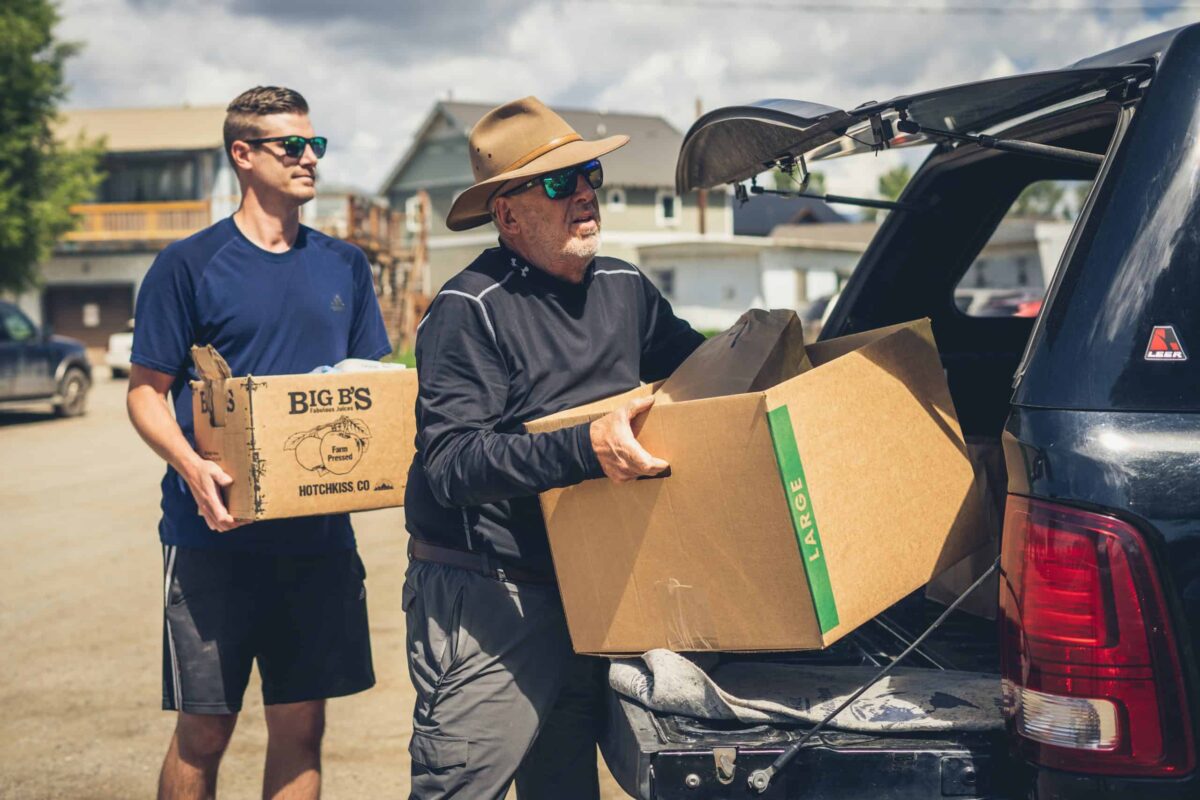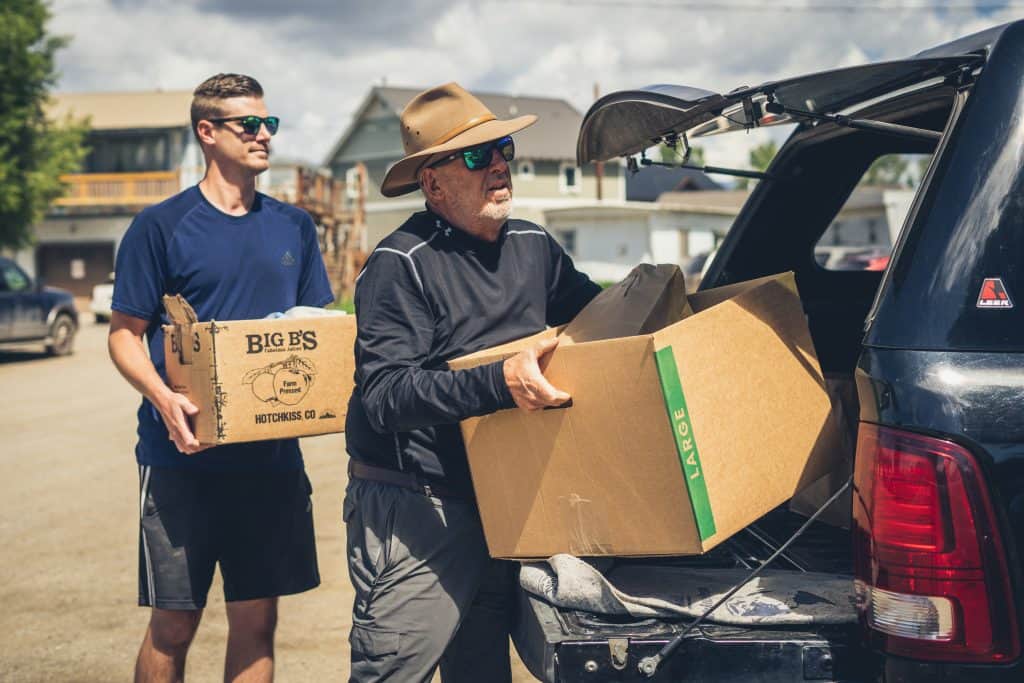
“If we want volunteers to have meaningful experiences, we need to give them some space,” Jodi Payne, the pantry’s executive director explains. “In the new pantry, my vision is that people will walk in and it’s kind of like a grocery store.”
The Gunnison Country Food Pantry (GCFP) is currently located at 321 N Main St. (just off Ohio Avenue), but will soon move to a larger venue, the old Colorado Fitness location at 405 W. Tomichi. The move — slated for September, will allow the pantry to more comfortably house both food and volunteers for its growing operations.
Currently, the GCFP makes use of multiple storage units to complement the 800 sq. ft. property, a clear sign for Payne that the pantry was ready for an upgrade.
Down the line, Payne, a previous Western Residence Director who has been in her GCFP role for about eight months, wants to continue to expand the pantry’s capabilities and resources to serve the needs of the community more holistically, including offering water at the pantry’s new venue.
Those expansion efforts also include opening a new Mountaineer Marketplace and Food Hub within the Leslie J. Savage Library. The hub will officially open its doors in September and allow students convenient access to pantry resources as part of Western’s broader initiative to become a Hunger Free campus.
The market will be available to students on Tuesdays and Thursdays from 12 to 2 p.m., and expand upon preexisting food security efforts in conjunction with Western’s Omicron Delta Kappa (ODK), which included regular free bread giveaways and pop-up pantries. Payne adds that the free bread giveaways will continue, provided there’s enough bread to go around.
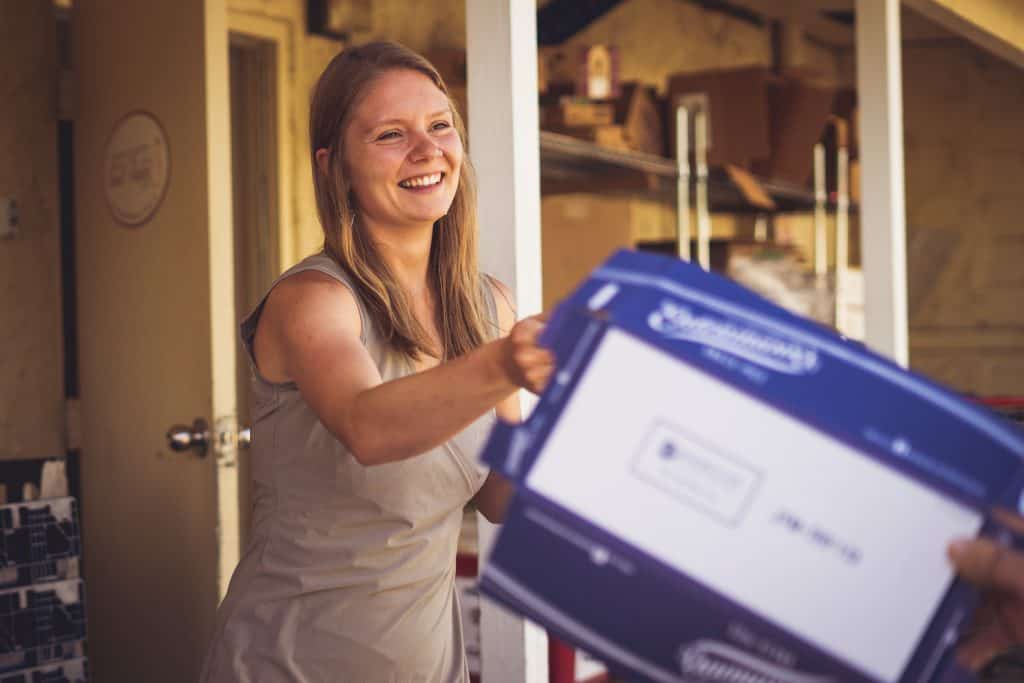
Sourcing the pantry’s food
GCFP obtains food through multiple different avenues, and Payne notes that it’s important for the public to understand the difference between food banks and food pantries — pantries distribute food to individuals in need, while larger food banks serve as hubs to allocate food to a network of pantries.
GCFP’s food bank is Care and Share, based out of Colorado Springs. Care and Share serves the majority of the Western Colorado — more than 280 food partners across 31 Coloradan counties.
“We send in our monthly numbers — how many folks are coming in, and based on that Care and Share decides what our allocation is and then they ship that down from the Springs once a month,” adds Payne.
Care and Share distributes food from The Emergency Food Assistance Program (TEFAP), a federal program administered by the U.S. Department of Agriculture (USDA).
From the program’s website: “The Emergency Food Assistance Program (TEFAP) is a federal program that helps supplement the diets of low-income Americans by providing them with emergency food assistance at no cost.”
TEFAP food is typically shelf stable — think cans of vegetables, soup, beans, and fruit, plus items like shelf stable milk, cereal, juice, and other household staples, including some meat, cheese, and butter.
Care and Share also sends non-TEFAP food, supported by their own fundraising, government funding, and a “rescue food” program, which utilizes grocery store food that would otherwise be slated for the dumpster.
The pantry also benefits from the local rescue food that comes in daily from Gunnison’s local grocery stores — including City Market, Walmart and Safeway — under the umbrella of the Feeding America program. That food is transported by the pantry’s steadfast volunteer corps.
Typically, that rescue food is approaching its official sell-by date, or has small aesthetic issues that make it less marketable to the average store goer. Frequently, the pantry receives chips whose bags have popped heading over Monarch Pass — which are then clamped up and sent out for consumption.
Mountain Roots’ Backyard Harvest program also benefits the GCFP — any extra food from that program heads to the pantry as part of the organization’s food security efforts. Additionally, Sue Wyman’s Gunnison Gardens donates food to the pantry — largely eggs from her roughly 300 chickens.
This past year, the pantry received a chunk of money from the Colorado Food Pantry Assistance Grant (FPAG) program — under the umbrella of the state’s Hunger Free program, to purchase roughly $30,000 of food from a variety of local farmers and producers.
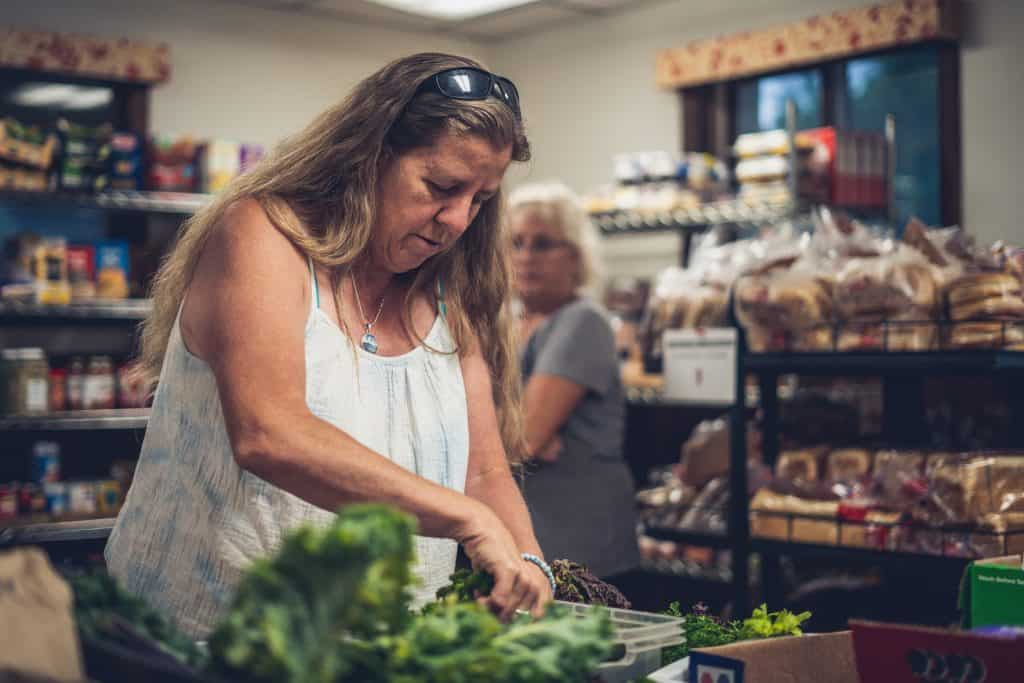
Meeting the post-pandemic need
The GCFP was first incorporated as a nonprofit back in 2006, but has seen a recent spike in its usage over the course of the pandemic. Payne notes that in 2019 — before Covid-19, the pantry served about 800 families. In 2020, that number spiked to over 1,300 families—roughly 3,300 distinct individuals. In 2021, the pantry served just over a thousand households, more than 2,200 people.
In 2022, the pantry served about 850 families just in April alone, and Payne notes that she can tell pantry usage is elevated — likely driven by high inflation and the regional housing crunch.
On both a personal and professional level, Payne is passionate about fighting the stigmas associated with food pantries, in particular the notion that only the most low-income individuals should utilize pantry resources.
She notes that there is often an abundance of food coming through the door — produce, milk, bread, and other perishable items which won’t last forever, and that students and other community members should feel welcome to take what they need. She describes the pantry as “low-barrier.”
“If you think you’re taking [food] from someone else, you’re probably wrong — you’re probably doing us a favor,” says Payne. “There’s a shelf life on so much of this stuff … [really] you’re doing us an environmental favor by guaranteeing that food doesn’t go to the landfill.”
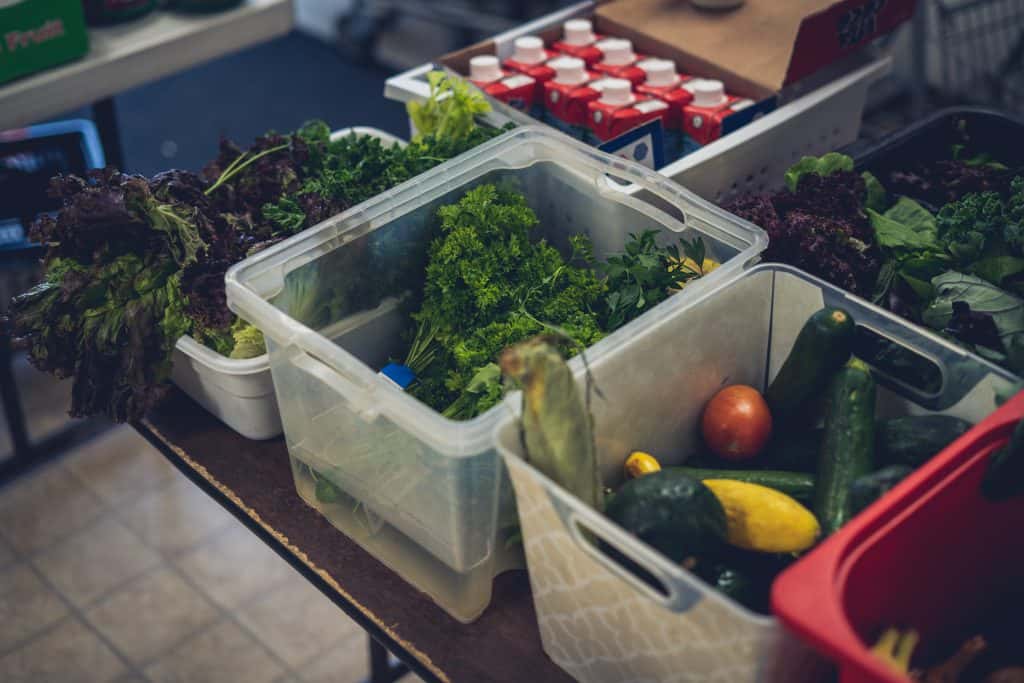
Payne thinks that the concept of “handouts” and of being too wealthy to utilize pantry resources stems from deeper, entrenched ideas of White supremacy, a kind of “bootstrap” mentality, and ultimately, a dominant neoliberalism system that influences how many people view employment and aid resources.
“That [idea of handouts] really goes back to Reaganomics,” she adds.
Payne is trying to fight these nations, and adds that both Gunnison County and the State of Colorado ask her for pantry usage statistics on a regular basis.
“If those [numbers] are not accurately reflecting [our community], then we don’t know what the actual problem is and then I can’t say to our local legislators ‘we have a problem here,”‘ she notes.
Payne implores people to set aside their pride and use the resources available — both for their own good but also for the sake of the broader community, and adds that people can also consider volunteering with the pantry in exchange for food.
The pantry currently has a number of open volunteer shift slots, including distribution shifts on Mondays from 1-4 p.m. and Wednesdays from 1-7 p.m., and prep shifts from 9-11 a.m. Monday through Friday.
Payne says that when the pantry makes the big move down Highway 50, they will be needing a lot more help to manage the new space. “I would encourage students to reach out to me, or to reach out to Angie about volunteering,” she adds.
For volunteer inquiries or other questions, Angie and Jodi can be reached at pantrymanager@gunnisonfoodpantry.org and director@gunnisoncountryfoodpantry.org, respectively.
At the pantry, a typical volunteer shift consists largely of organizing and preparing the pantry for recipient shopping and packaging food for the delivery program, which serves folks with access barriers — language access, mobility and transportation issues, and other factors which make accessing the physical pantry difficult.
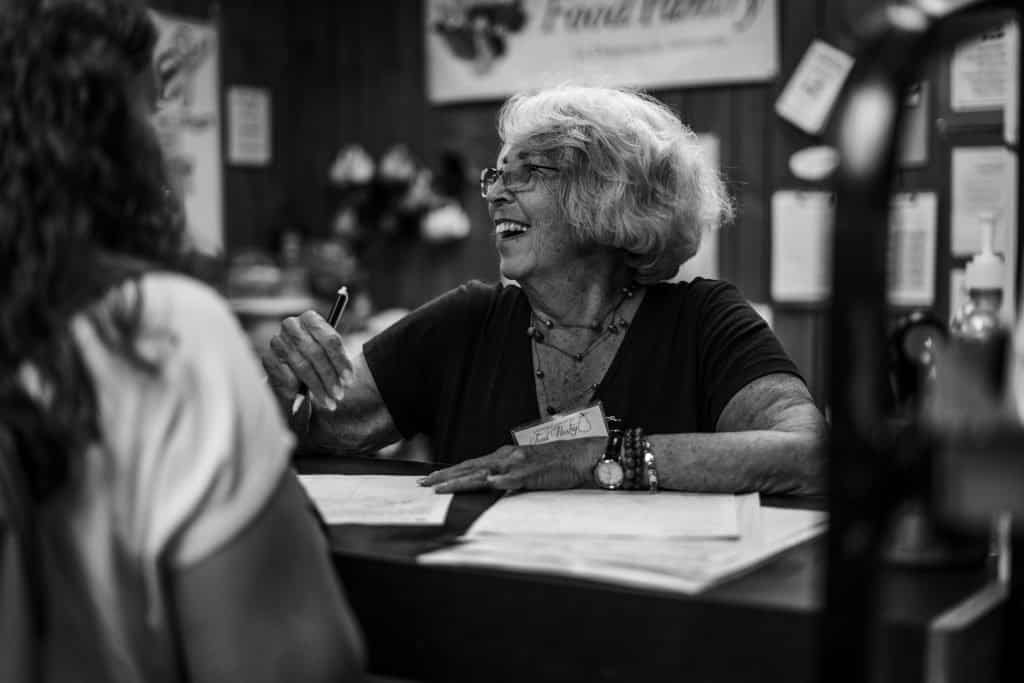
Returning to the topics of accessibility and needs, Payne adds: “I think we don’t see nearly as many people as we should.”
Examining the county’s demographic data and adding together the Gunnison residents served by the Senior Center’s thrice weekly meals, Mountain Roots’ Backyard Harvest program, and the food pantry, Payne says she can see the larger gap within the county — hundreds, if not thousands of local people who could put pantry resources to good use.
So, the pantry has doubled down on efforts to entice visitation. In the vein of de-stigmatization, the pantry developed a Faces of Hunger campaign on their website, which features stories of valley residents from all walks of life who utilize pantry resources.
“What I want folks to hear is not ‘food pantry’, I want them to hear ‘free groceries,’” says Payne. “Who doesn’t need free groceries?”
Jodi adds that accessing pantry resources is not a selfish act — in fact, it’s a communally minded one that bolsters the chances that people will continue living in the valley and achieve financial security.
“It’s really about the entire community,” she concludes. That greater food pantry community extends to the volunteer corps as well.
“We have some folks who have some institutional history here, who have spent lots of time here, and who the pantry means the world to. Those are the folks that inspire me. My cause was homelessness until six months ago. Now I’m looking at these folks and the love that they have for this community and the love that they have for this pantry and I’m like ‘I got to work hard [for them].”
To learn more about the Gunnison Country Food Pantry, you can check out their website, where you can donate, check the pantry’s hours, and explore the different programs and people of the GCFP. You can also follow them on Facebook and Instagram.


